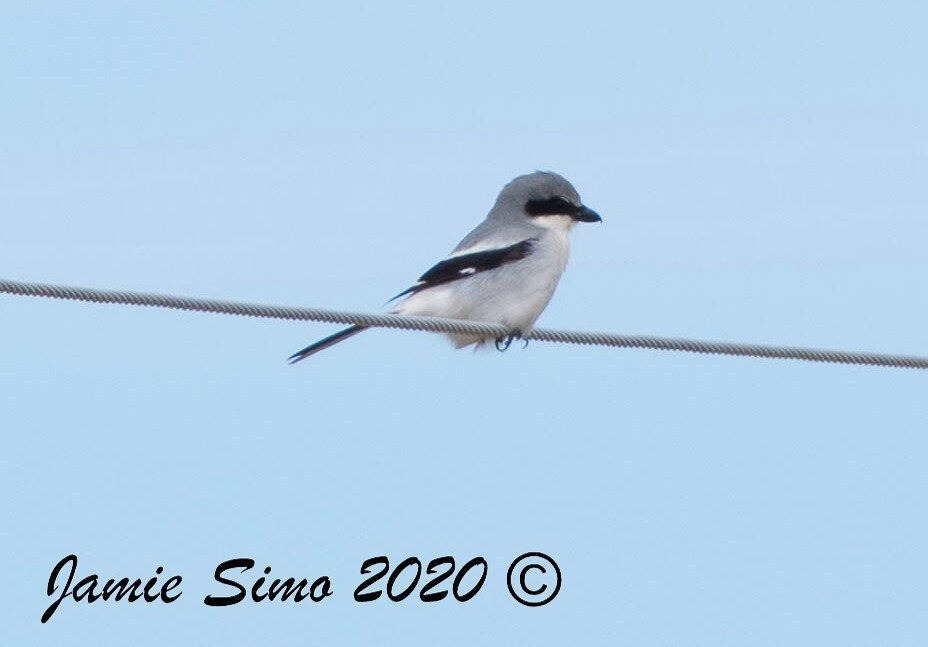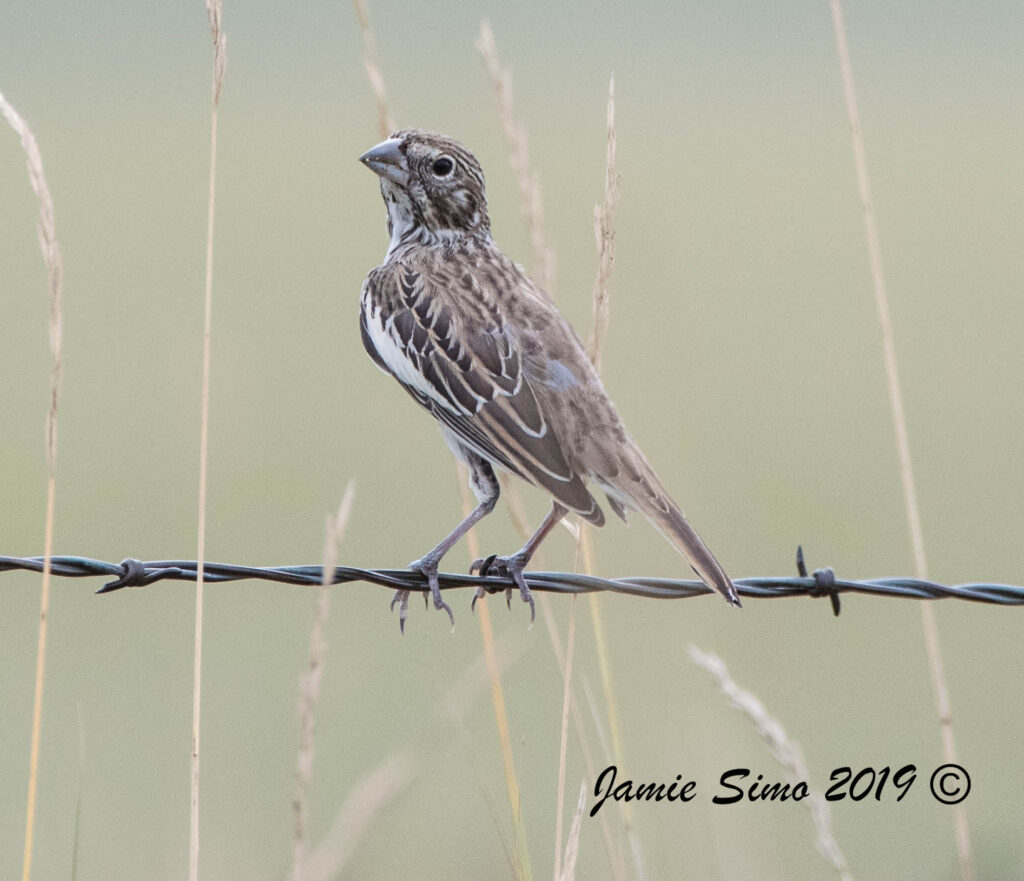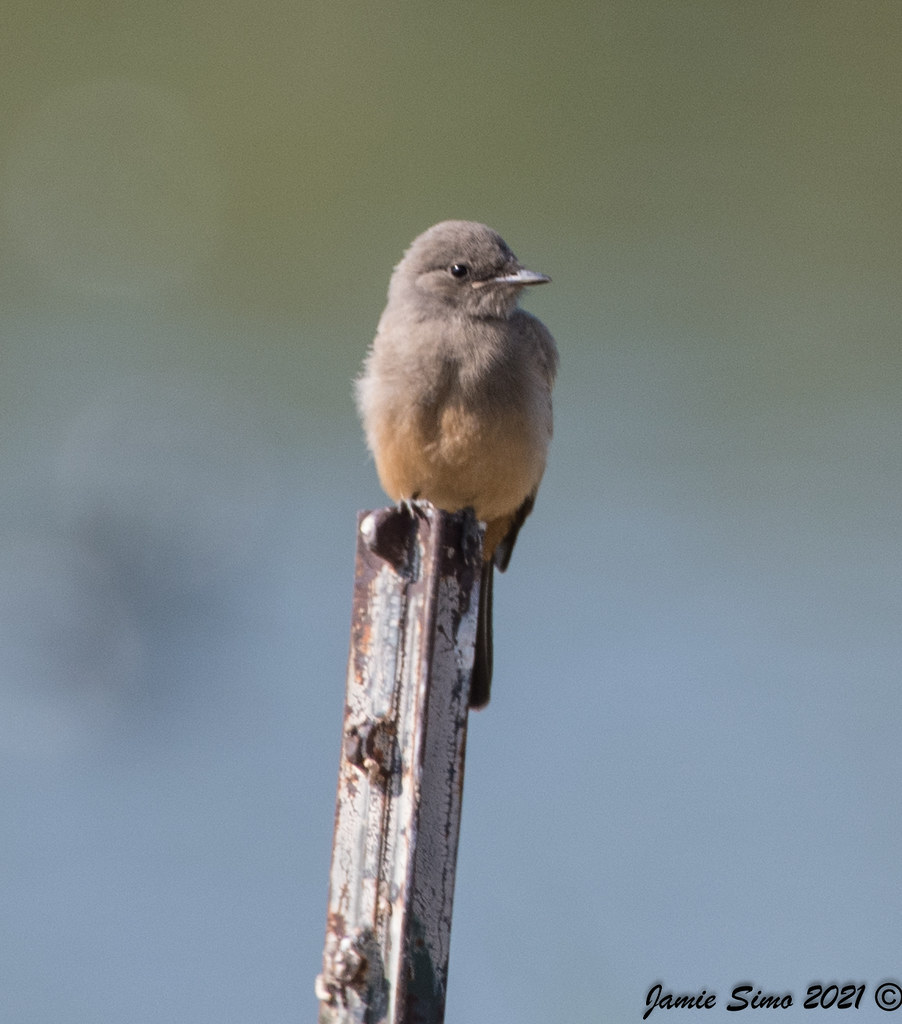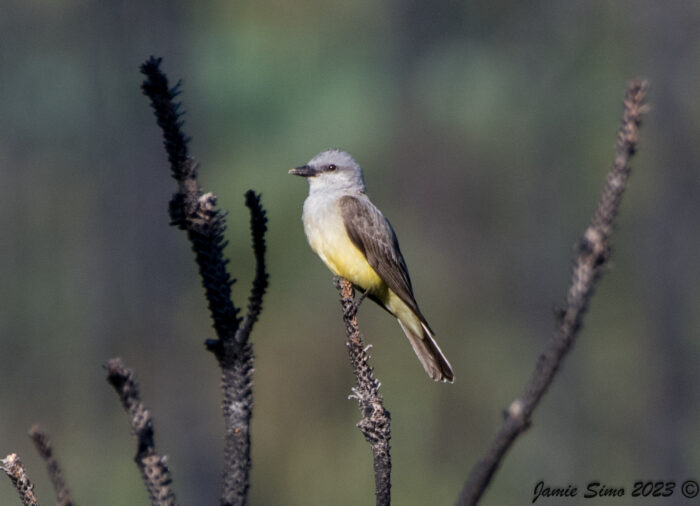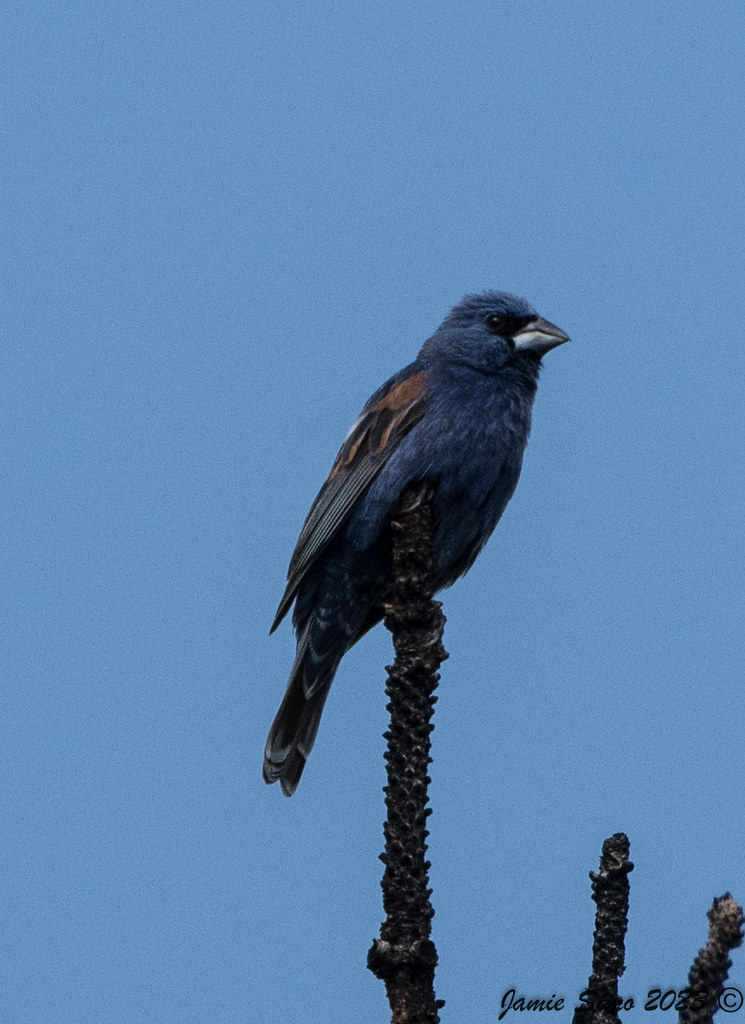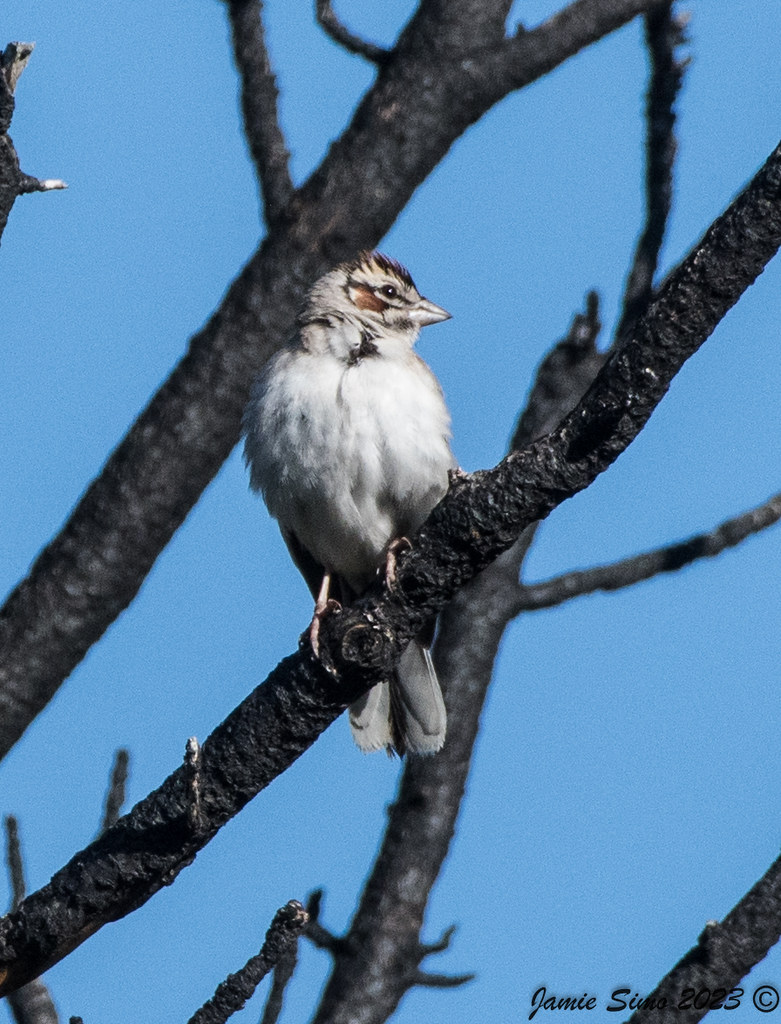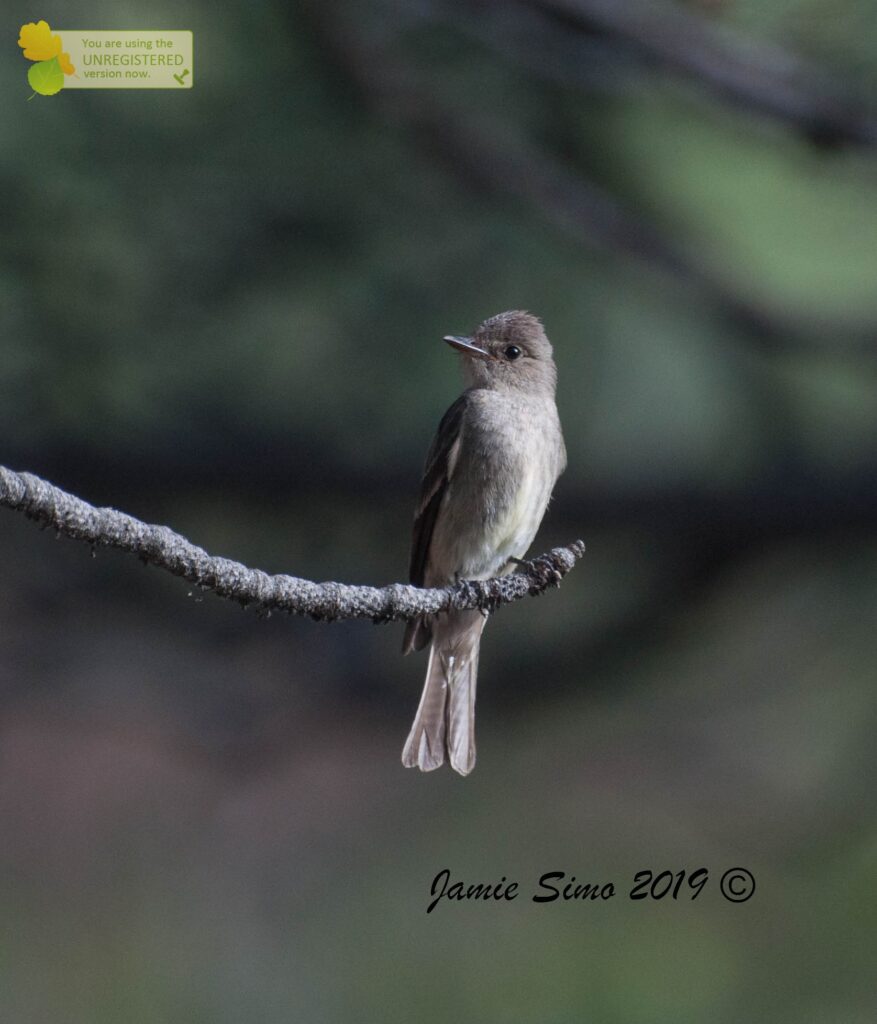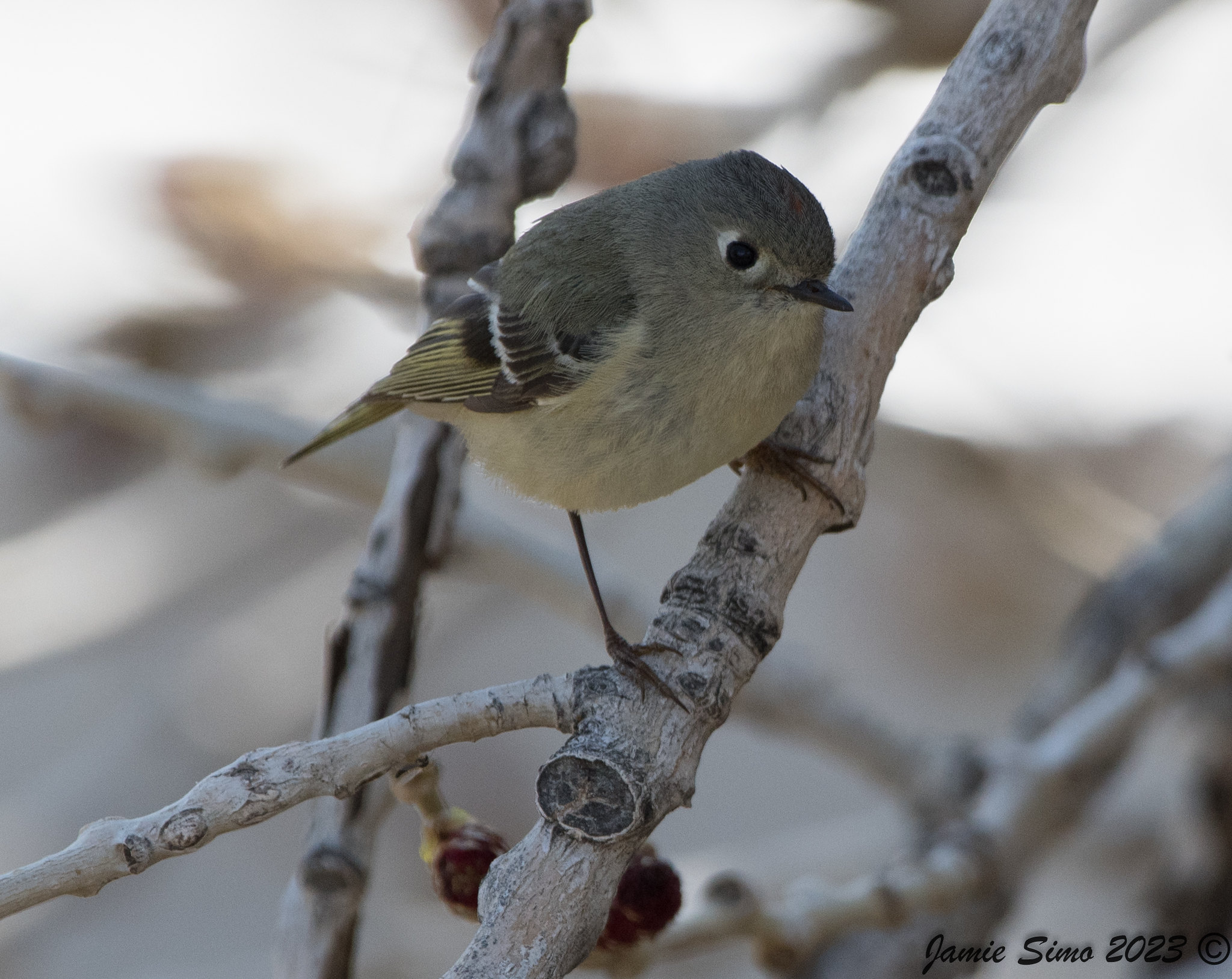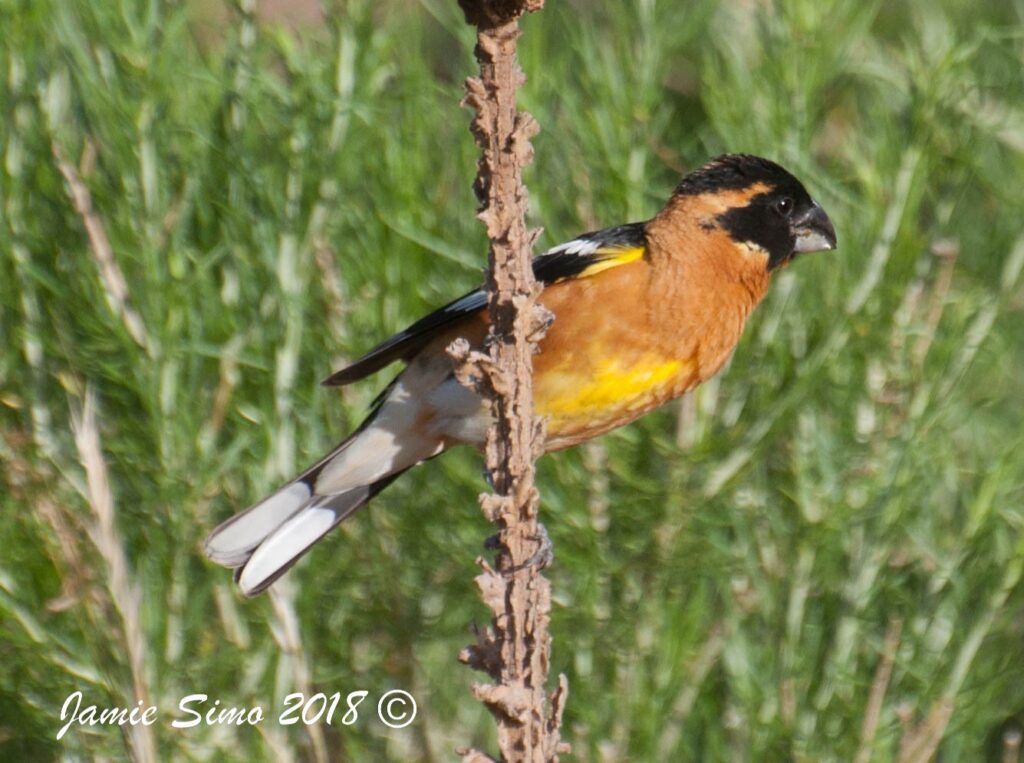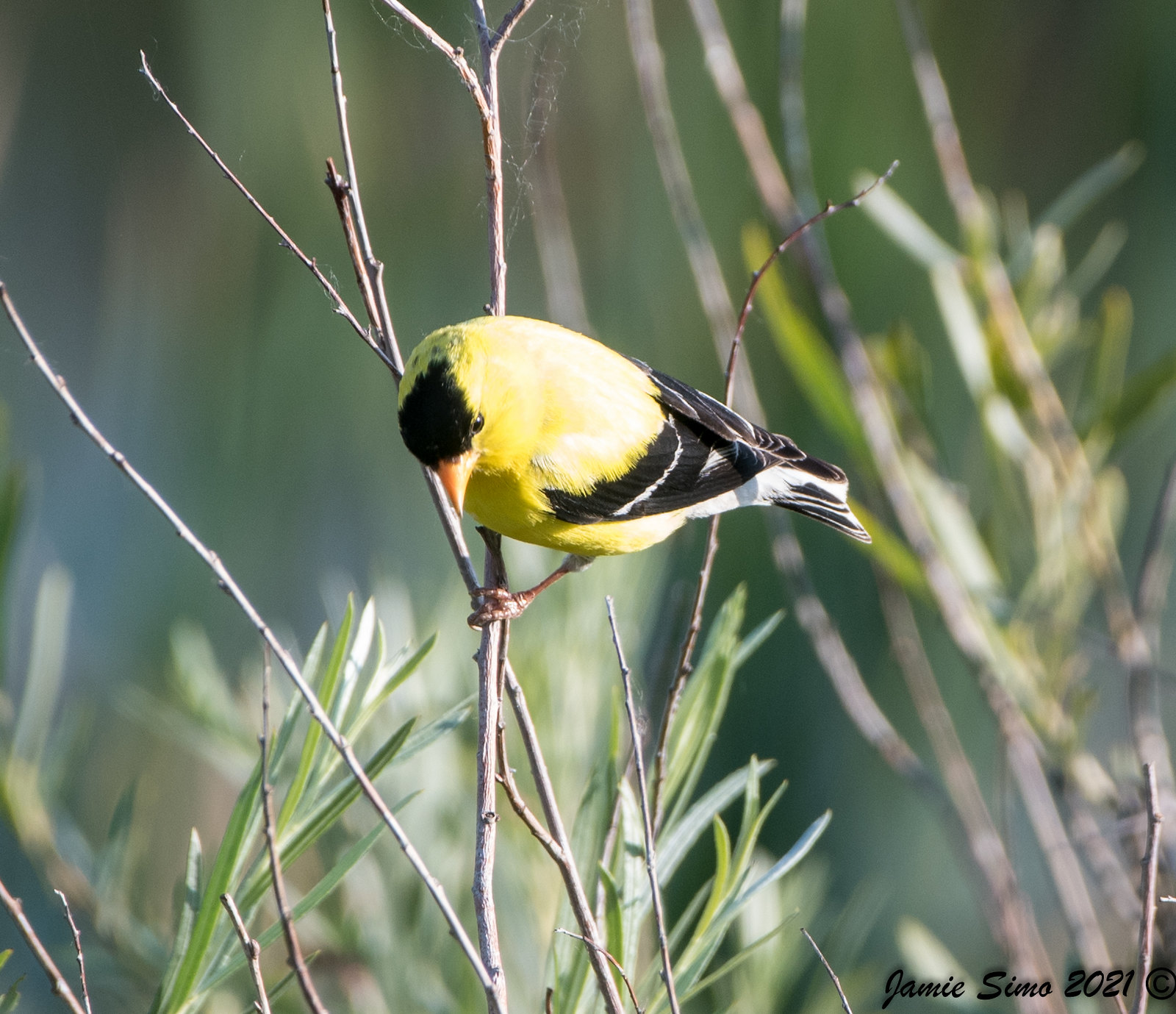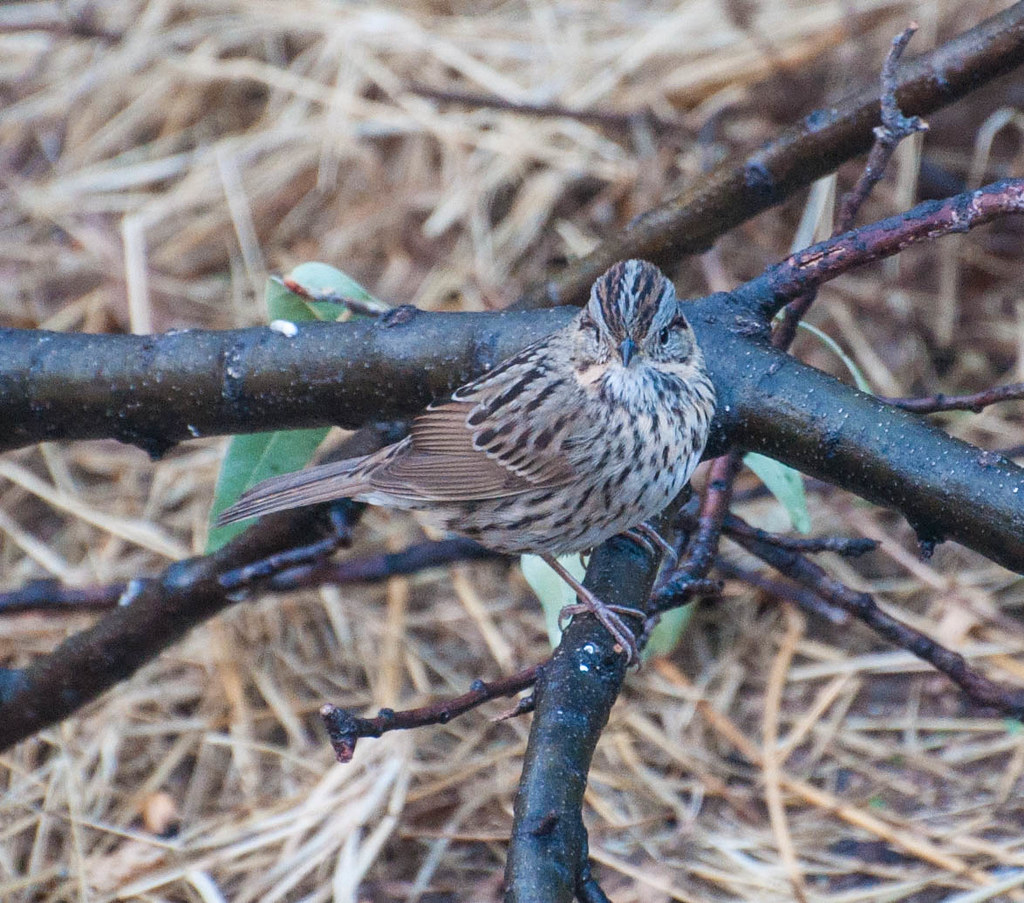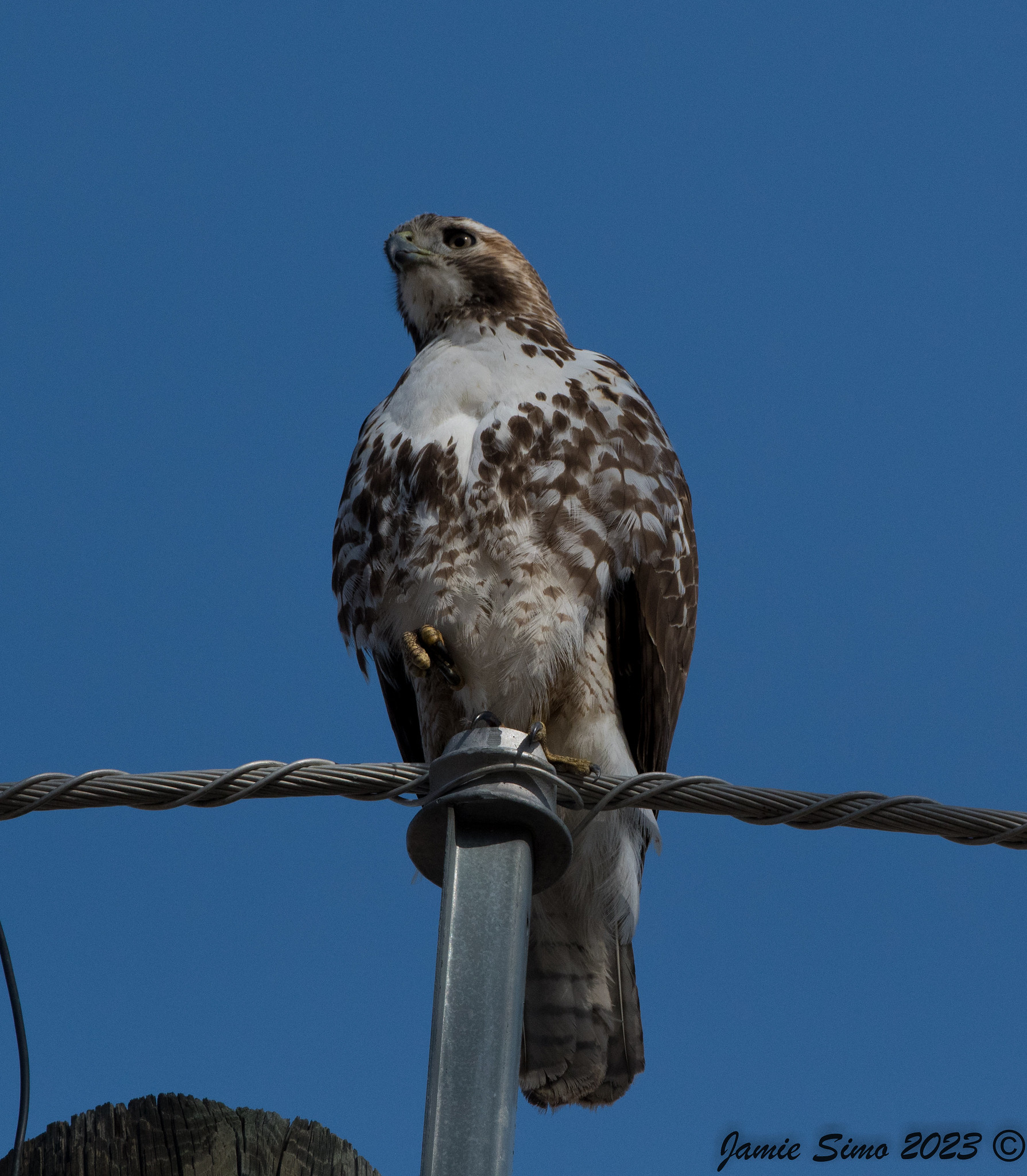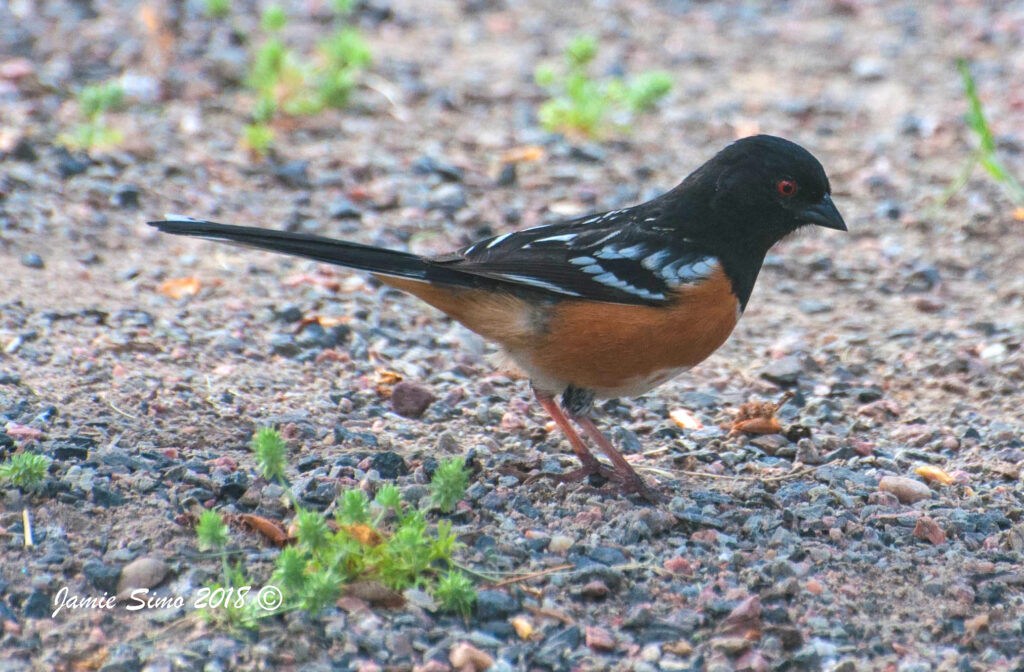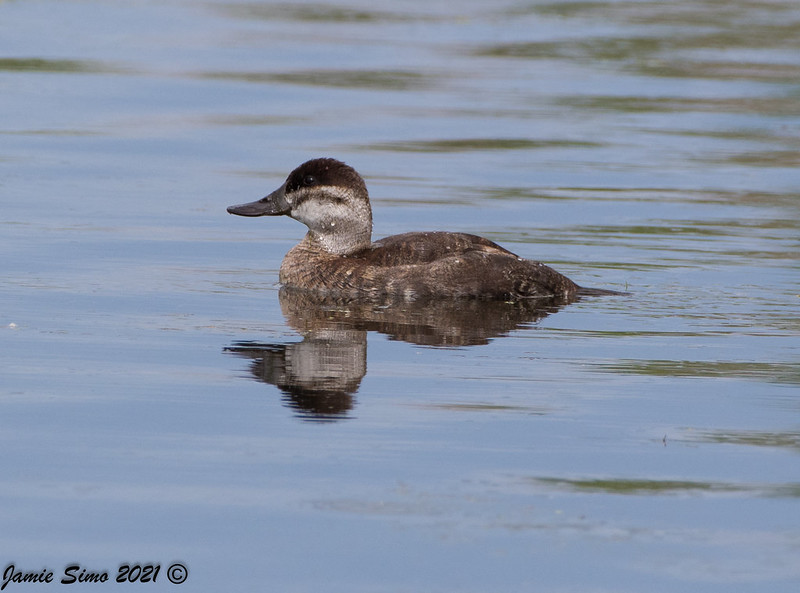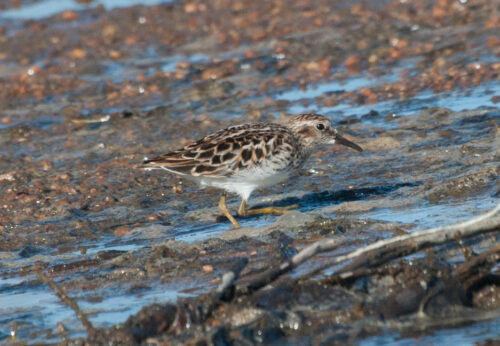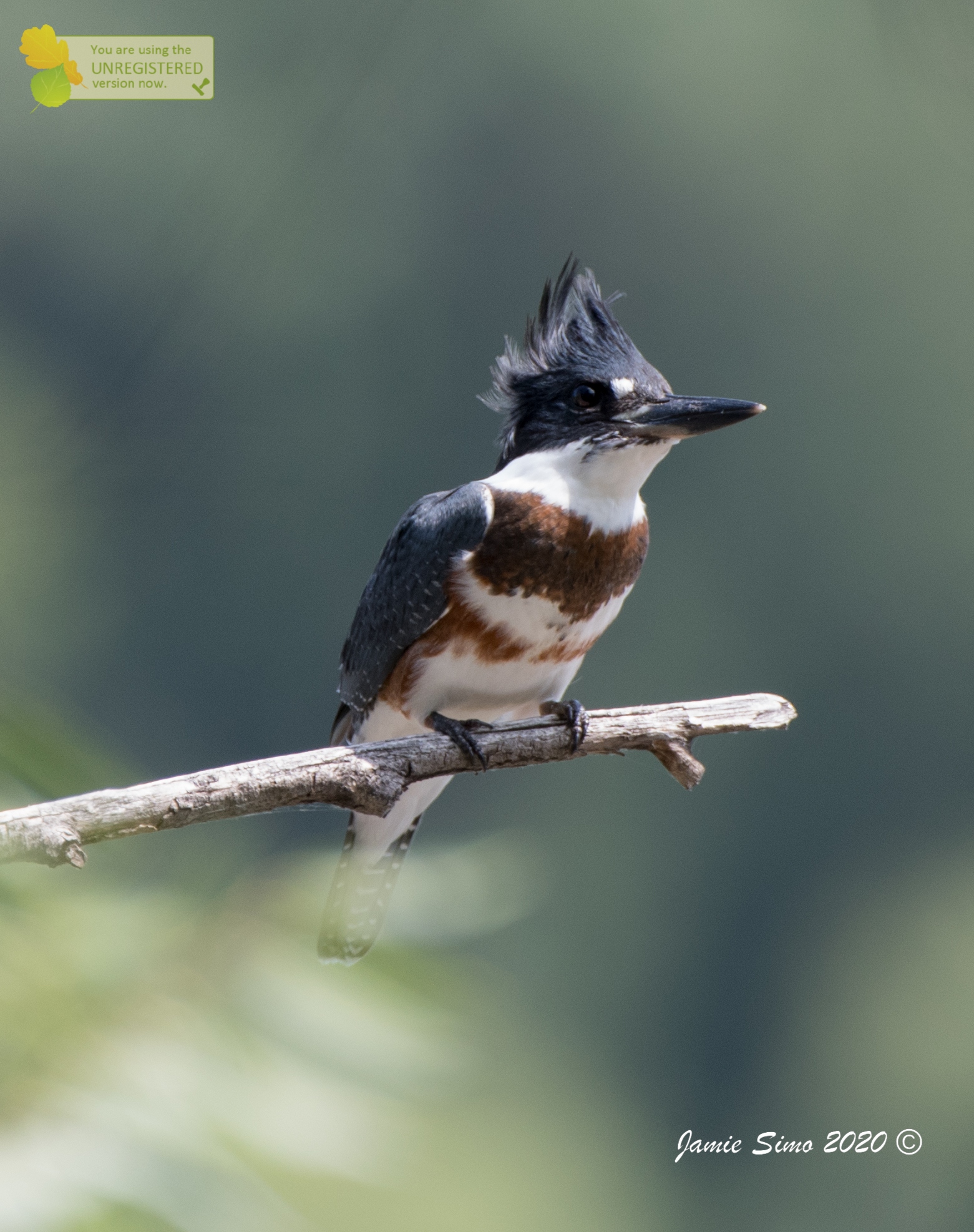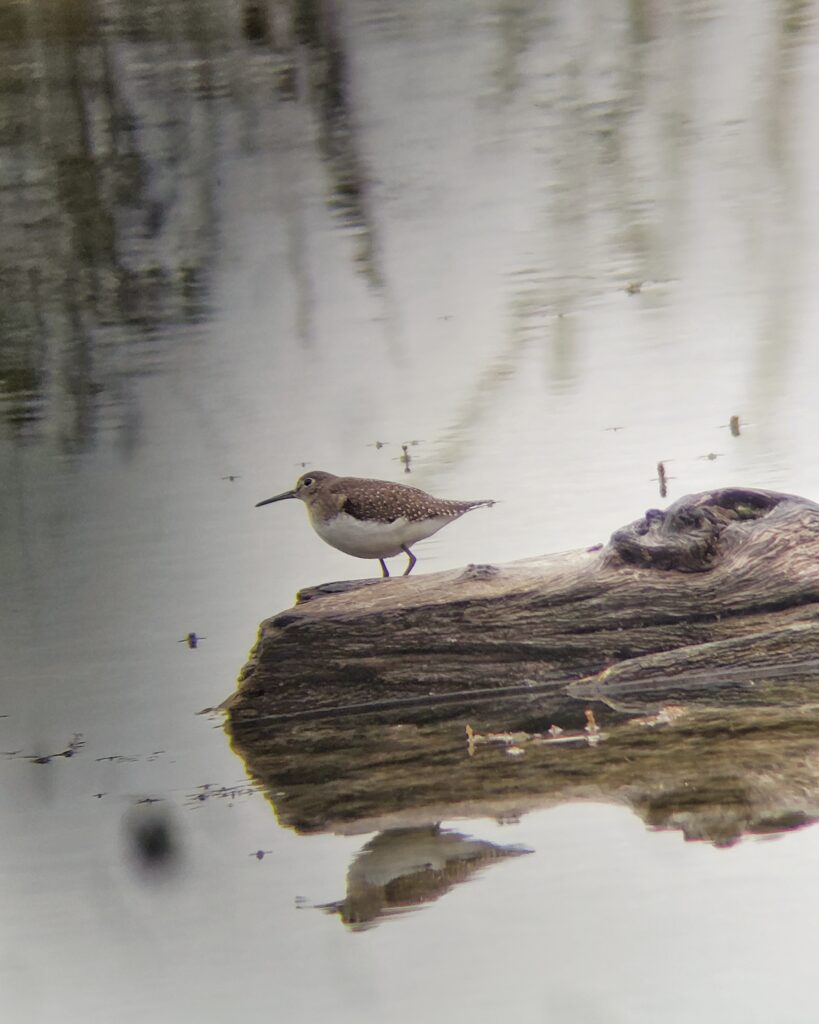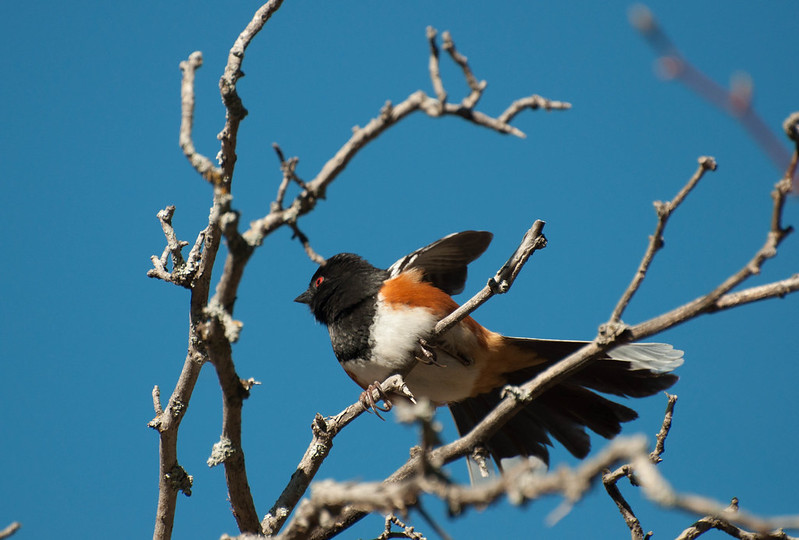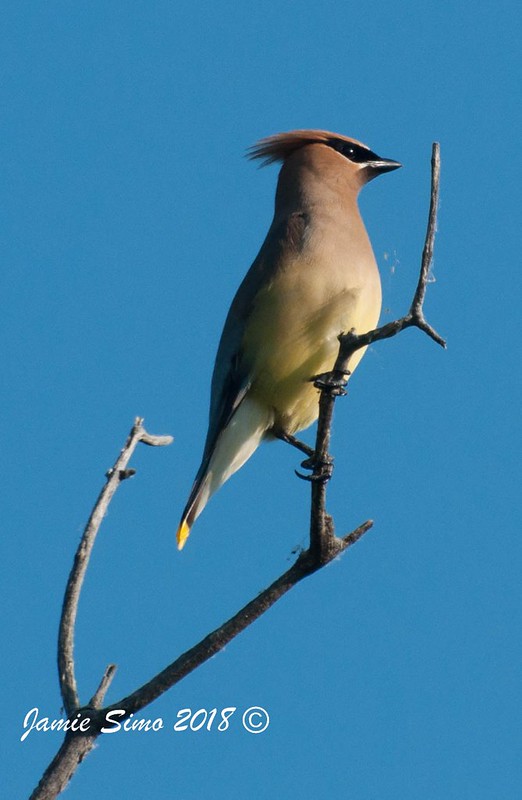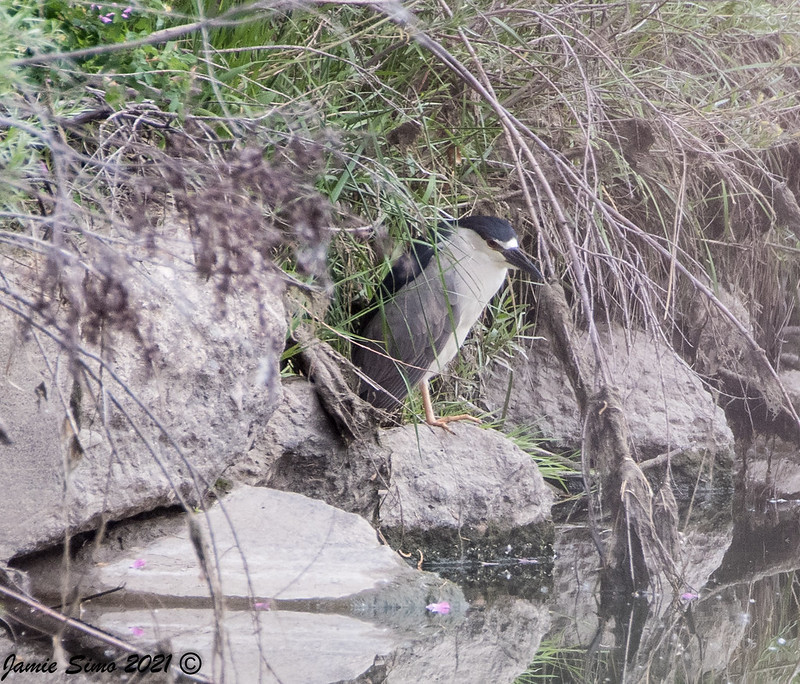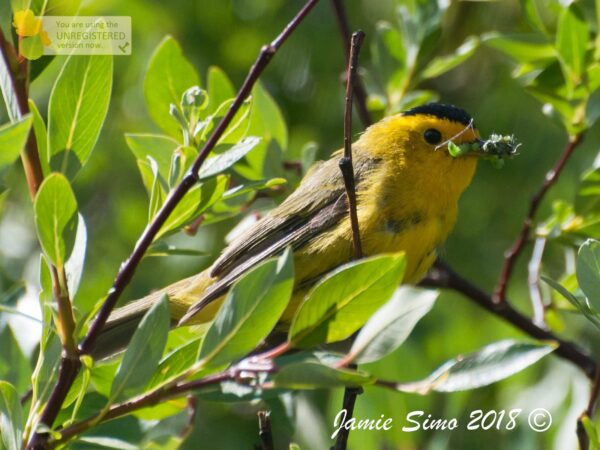
Old St. Vrain Road in Lyons is a beautiful, scenic place for a leisurely bird walk. Because it’s flat and all paved, it’s perfect for those with mobility challenges, and, as a migrant trap, it can offer up some unexpected avian delights. Our small group met at the Heil Valley Ranch Picture Rock Trail parking lot since parking is limited on Old St. Vrain Road and, as a residential area, we wanted to be respectful to the residents.
August and early September can be challenging for birders because the birds are largely quiet, more focused on bulking up for migration than establishing or maintaining territory and mates. Still, we had some great birds, including a lively little Canyon Wren that hopped up one of the canyon walls and let us admire for a few minutes. Canyon Wrens are one of the prettiest wrens with their cinnamon color and black and white speckling on head and back. Their falling song evokes the image of a stone tumbling down the canyon.
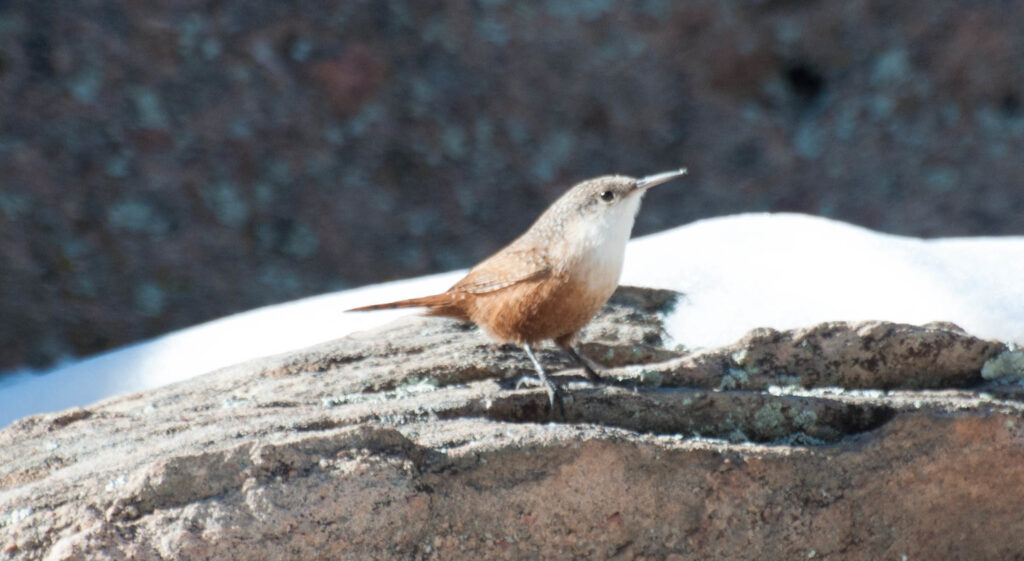
We were flummoxed by several quickly-darting yellow-colored birds before we finally were able to get good looks at a Wilson’s Warbler with his little black toupee like Moe from The Three Stooges. Wilson’s Warblers breed at higher altitude, typically in streamside willow carrs. Females and immatures lack this black cap, but share the overall green-yellow color.
Another mysterious yellow bird we saw was a female Western Tanager who was enjoying the array of berries growing along the creek. Unlike male Western Tanagers, which are unmistakable, females could be confused for a goldfinch. However, Western Tanager females are bigger and lankier than either our Lesser or American Goldfinches with a thicker, longer bill and two pale wing bars on a darker wing.
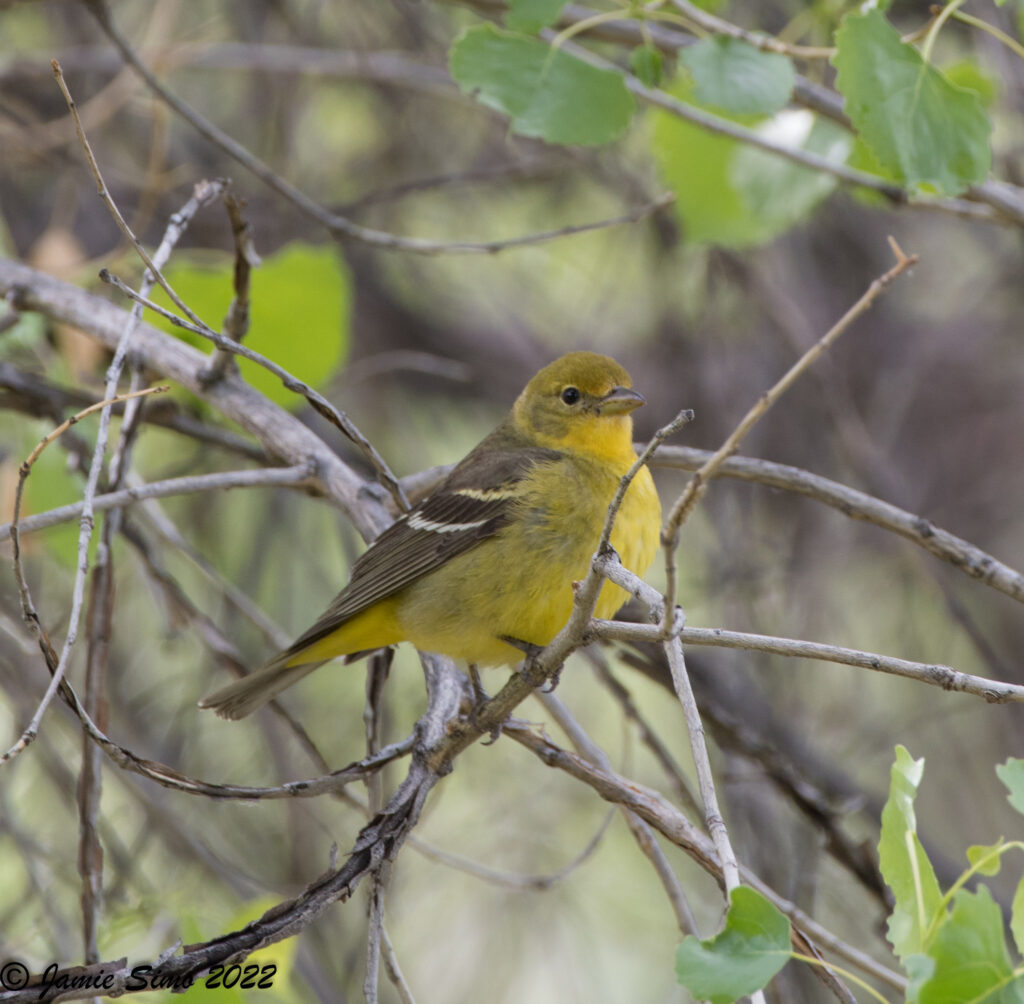
Other species of note were Gray Catbirds, several Wild Turkeys (almost guaranteed here), White-throated Swifts, a singing (but unseen) Plumbeous Vireo, and a lone Osprey at the end of our walk. A quiet day, but always a good one on Old St. Vrain Road!
Old Saint Vrain Rd, Boulder, Colorado, US
31 species (+1 other taxa)
Wild Turkey 4
Rock Pigeon (Feral Pigeon) 9
Eurasian Collared-Dove 1
Mourning Dove 1
White-throated Swift 6
Broad-tailed Hummingbird 3
Osprey 1
Downy Woodpecker 1
Northern Flicker 1
American Kestrel 1
Plumbeous Vireo 1
Steller’s Jay (Interior) 1
Blue Jay 6
American Crow 1
Black-capped Chickadee 6
Barn Swallow 1
swallow sp. 5
Red-breasted Nuthatch 1
White-breasted Nuthatch 1
Canyon Wren 1
European Starling 1
Gray Catbird 3
American Robin 1
Cedar Waxwing 1
House Finch 8
Red Crossbill 1
Lesser Goldfinch 5
Song Sparrow 1
Spotted Towhee 2
Yellow Warbler 1
Wilson’s Warbler 1
Western Tanager 2


